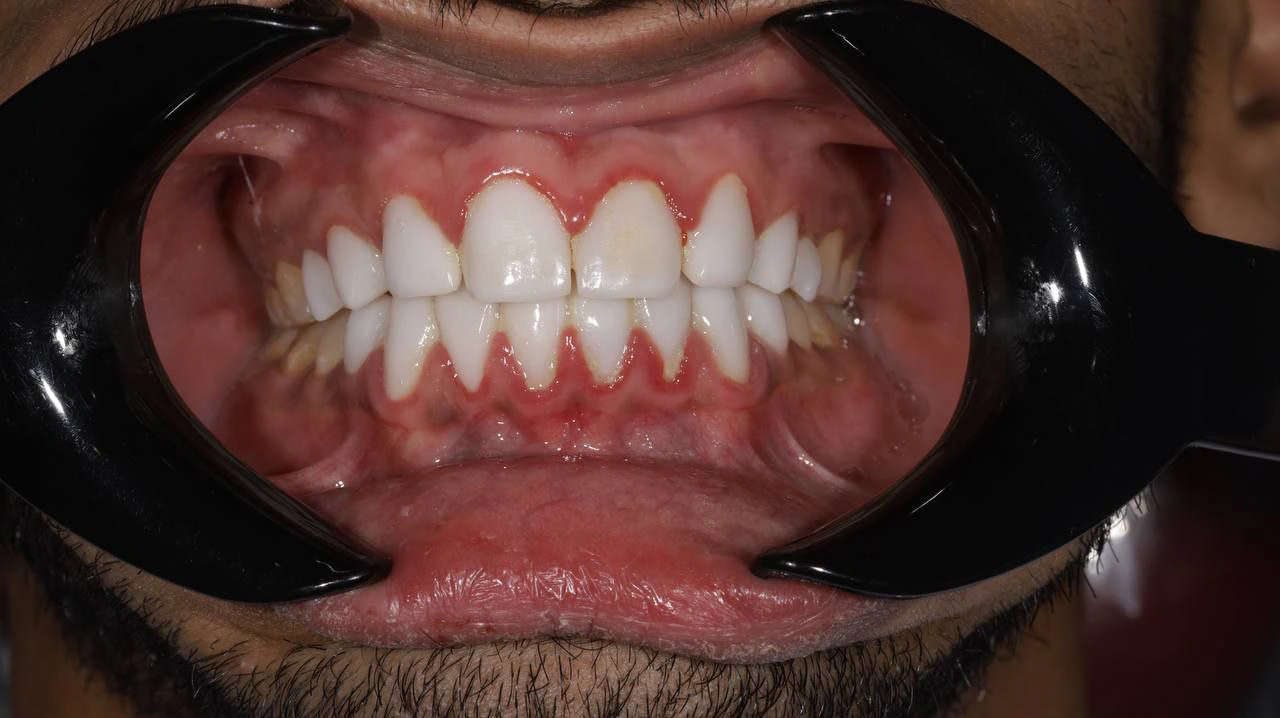Smile Rehabilitation with New Ceramic Veneers
18 November 2024
Diagnosis
Dental Findings:
Gingival health: moderate marginal inflammation before treatment.
missing upper lateral incisors.
Diagnosis: Aesthetic disharmony due to shape and shade irregularities of anterior teeth.
Treatment Objectives
Relief the gingival inflammation.
Improve smile aesthetics through alignment, symmetry, and shade correction.
Preserve as much natural enamel as possible.
Achieve a balanced smile line with natural translucency and proper gingival contour.
Treatment Plan
Step 1: Diagnostic wax-up to visualize the final outcome.
Step 2: Removed the old veneers
Step 3: Shade selection using a digital shade guide to ensure natural blending.
Step 4: Fabrication of lithium disilicate (E.max) ceramic veneers.
Step 5: Try-in and final bonding using light-cured resin cement.
Step 6: Polishing and occlusal adjustment.
Clinical Procedure
Preoperative Photos: Taken for documentation and analysis.
Tooth Preparation: Conservative reduction (≈0.3–0.5 mm).
Impression: PVS impassion for both jaws.
Mock-up Evaluation: Checked for aesthetics and phonetics.
Bonding Protocol:
Etching of enamel with 37% phosphoric acid (30 sec).
Application of silane on veneers.
Cementation with light-cured resin.
Margins cleaned and polymerized.
Final Adjustments: Occlusion checked in centric and eccentric movements.
Results
Postoperative Outcome:
Excellent harmony between teeth and gingiva.
Natural translucency achieved in anterior teeth.
Patient reported high satisfaction with colour and smile aesthetics.
Images show pre- and post-treatment results demonstrating improved alignment, shape, and brightness of anterior teeth.
Discussion
This case demonstrates how conservative veneer therapy can achieve a significant aesthetic transformation with minimal enamel loss. Proper planning, shade selection, and adhesive techniques are critical for a long-lasting, natural-looking result.
Reflection / Learning
Importance of maintaining gingival health during veneer preparation.
Effective communication with the dental lab ensures predictable aesthetic outcomes.
Patient motivation and hygiene reinforcement contribute to long-term success.



